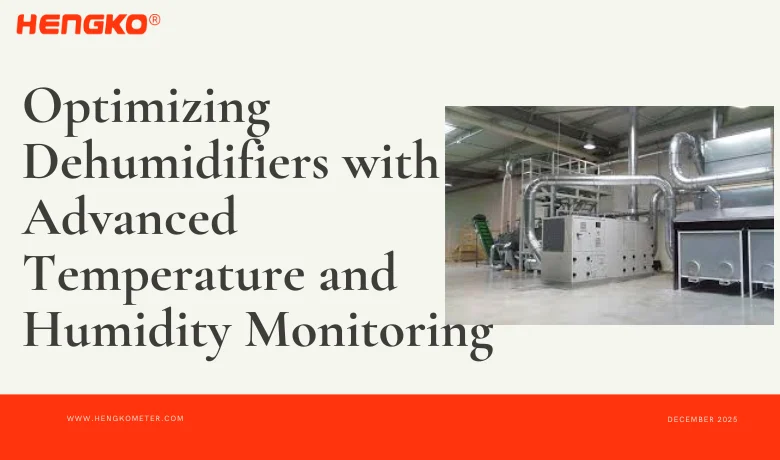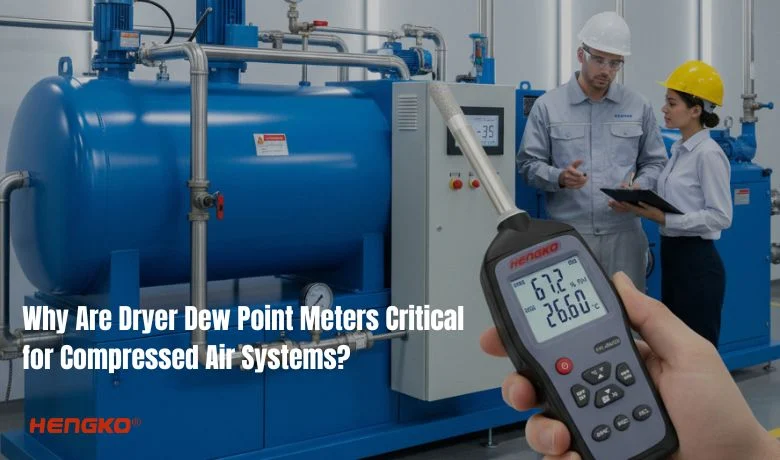In the modern age of technological advancements, the demand for batteries—especially lithium-ion batteries—has skyrocketed. These energy sources are integral to a wide range of applications, including consumer electronics, electric vehicles, and renewable energy storage systems.
To ensure the optimal performance, safety, and longevity of these batteries, temperature and humidity management during their manufacturing process is of paramount importance. This is where temperature and humidity transmitters (TH transmitters) come into play, offering an essential solution for precise monitoring and control.
In this article, we will explore the crucial role of temperature and humidity transmitters in battery manufacturing and their significant impact on battery quality.
1. The Importance of Temperature and Humidity in Battery Manufacturing
Battery production involves several sensitive processes where environmental conditions—particularly temperature and humidity—can greatly influence the final product.
In the manufacturing of lithium-ion batteries, for instance, precise environmental control is needed during the preparation, assembly, and testing phases. Temperature and humidity fluctuations can negatively affect the raw materials, assembly process, and the overall battery structure, leading to defects such as reduced battery capacity, premature aging, or even safety hazards like overheating and short-circuiting.
For this reason, temperature and humidity transmitters are indispensable tools in ensuring that these environmental factors are consistently monitored and maintained within the specified range throughout the production process.
2. Key Applications of Temperature and Humidity Transmitters in Battery Manufacturing
a. Raw Material Preparation
The preparation of battery materials, including electrodes, electrolytes, and separators, is the first and one of the most critical stages in battery manufacturing. These materials are often highly sensitive to moisture and temperature changes.
For example, lithium metal is prone to oxidation, which can degrade the material’s quality if exposed to high humidity. Similarly, the electrolyte solution is sensitive to both temperature and moisture, as they can impact its conductivity and stability.
Temperature and humidity transmitters are used to monitor the environment where these materials are stored and processed. By maintaining optimal humidity and temperature levels, manufacturers can ensure that these raw materials retain their desired properties and are free from impurities that could affect the performance of the final battery.
b. Cell Assembly
Once the raw materials are prepared, the next step is to assemble the battery cells. This phase involves delicate processes such as electrode stacking, electrolyte filling, and sealing, all of which require precise environmental conditions.
Excess moisture during assembly can lead to short-circuiting or reduced battery performance. Similarly, high temperatures can cause chemical reactions that degrade the battery’s internal components.
Temperature and humidity transmitters play a key role in the cell assembly area by providing real-time data on environmental conditions. Automated systems linked to these transmitters can trigger adjustments to the temperature and humidity to prevent undesirable changes that could lead to faulty batteries.
c. Formation and Testing
After the cells are assembled, they undergo a critical process known as formation, where the battery is initially charged and discharged to activate the internal chemistry.
During this phase, maintaining a controlled environment is essential to ensure the battery’s capacity and lifespan are optimized. Fluctuations in temperature or humidity can cause the battery to overheat, degrade, or fail to perform as expected.
Temperature and humidity transmitters are used during the formation and testing phases to track and control environmental factors. By maintaining stable conditions, the likelihood of battery failure during testing is minimized, and manufacturers can ensure the batteries meet stringent quality standards.
d. Storage and Aging
Once batteries are manufactured, they need to be stored in ideal conditions to maintain their quality before shipment. Storage areas must be kept at a constant temperature and humidity level to prevent degradation over time. Batteries exposed to fluctuating conditions during storage are more likely to experience reduced performance, such as lower capacity or quicker self-discharge rates.
Temperature and humidity transmitters are used to monitor and control the conditions of battery storage rooms. By ensuring that the temperature and humidity remain stable, manufacturers can preserve the integrity of the batteries and extend their shelf life, making them safer and more reliable for consumers.
3. The Benefits of Using Temperature and Humidity Transmitters in Battery Manufacturing
Improved Product Qualit
By continuously monitoring temperature and humidity during every stage of production, manufacturers can identify and correct any deviations from the optimal environmental conditions. This helps to ensure that each battery produced meets the desired quality standards and performs reliably. Precise monitoring reduces the chances of defects and increases the yield of high-quality batteries.
Enhanced Safety
Batteries, especially lithium-ion types, are sensitive to environmental factors that could lead to dangerous situations, such as thermal runaway or short-circuiting. By using temperature and humidity transmitters to maintain control over the production and storage environments, manufacturers can minimize these risks, ensuring that the final product is safe for use.
Cost Efficiency
With proper environmental monitoring, manufacturers can reduce the likelihood of waste due to defective products. Maintaining optimal conditions during the entire manufacturing process ensures that materials and resources are used efficiently. Additionally, real-time data allows manufacturers to make adjustments as necessary, leading to fewer production delays and overall cost savings.
Regulatory Compliance
Battery manufacturing is subject to strict regulations, especially in industries like automotive and electronics. Many countries have specific environmental standards that must be met to ensure the safety and performance of batteries. Using temperature and humidity transmitters ensures that manufacturers comply with these regulations, avoiding costly fines and ensuring product safety for end users.
4. Choosing the Right Temperature and Humidity Transmitter for Battery Manufacturing
Not all temperature and humidity transmitters are created equal. When selecting a transmitter for battery manufacturing, it is important to consider factors such as:
Accuracy: The transmitter must provide highly accurate readings to ensure that environmental conditions are within the required range.
Durability: The transmitter should be able to withstand the harsh conditions often found in manufacturing environments.
Real-time Monitoring: The ability to monitor and adjust environmental conditions in real-time is essential for preventing defects and ensuring efficiency.
Integration with Automation Systems: The transmitter should be able to integrate seamlessly with the manufacturing system to automate adjustments and provide continuous data.
5. Conclusion
In battery manufacturing, precision is critical—especially when it comes to environmental control. Temperature and humidity transmitters are essential tools that help ensure the quality, performance, and safety of the batteries produced. From raw material preparation to storage, these transmitters provide real-time monitoring and control, preventing costly defects and enhancing production efficiency. By investing in reliable temperature and humidity monitoring systems, manufacturers can deliver high-quality, safe, and durable batteries that meet the needs of modern industries.
Looking for Reliable Environmental Monitoring Solutions?
At HENGKO, we specialize in high-precision temperature and humidity transmitters tailored for sensitive manufacturing environments like battery production. Our transmitters offer:
✅ High accuracy and fast response for real-time control
✅ Robust design suitable for harsh industrial conditions
✅ Customizable probe and interface options to fit your production line
✅ Stable performance for 24/7 monitoring
Whether you’re managing a dry room, cleanroom, or storage area, our solutions help ensure consistent product quality and compliance with industry standards.
Contact us today at sales@hengkometer.com to learn how our transmitters can enhance your battery manufacturing process.






